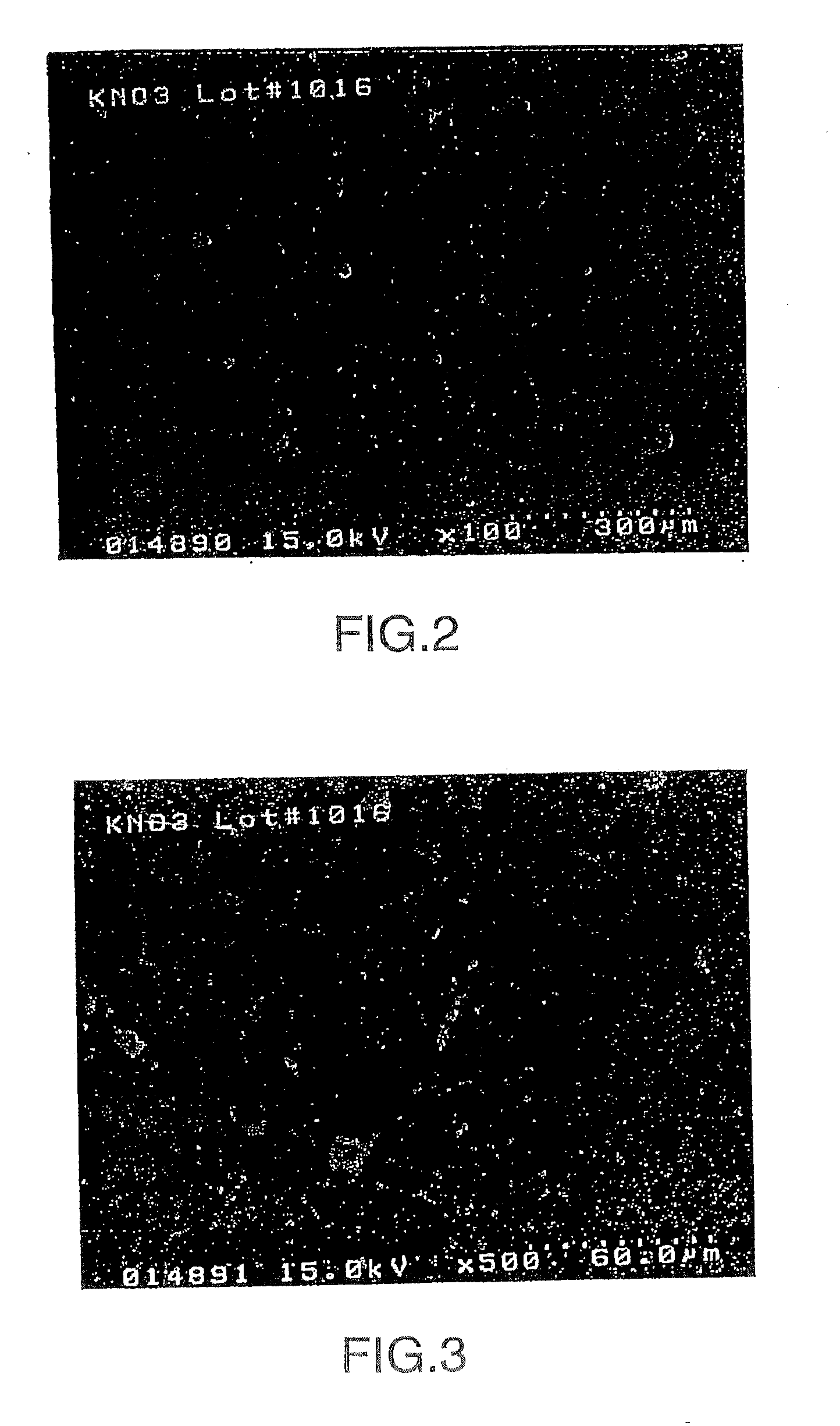Method of manufacturing glass substrate for use in information recording medium, and method of manufacturing information recording medium
a technology of information recording medium and glass substrate, which is applied in the direction of information storage, coating, and dispersed particle filtration, etc., can solve the problems of inability to achieve high flatness, inability to achieve high recording density, and projections giving adverse effects on magnetic disks, etc., to achieve the effect of suppressing particle attachmen
- Summary
- Abstract
- Description
- Claims
- Application Information
AI Technical Summary
Benefits of technology
Problems solved by technology
Method used
Image
Examples
examples 2-5
[0254] Subsequently, the glass substrate was fabricated in the same manner as the example 1 except that a several kinds of chemical strengthening salts, in which contents of Fe and Cr were adjusted, were prepared in a refining process of the salt. In this case, the content of Fe and Cr contained each salt was measured in the same manner as the example 1.
example 2
[0255] KNO3: 3.4 ppb (Fe), 0.5 ppb (Cr) [0256] NaNO3: 3.3 ppb (Fe), 0.8 ppb (Cr)
example 3
[0257] KNO3: 74.2 ppb (Fe), 12.5 ppb (Cr) [0258] NaNO3: 13.0 ppb (Fe), 3.3 ppb (Cr)
PUM
| Property | Measurement | Unit |
|---|---|---|
| particle diameter | aaaaa | aaaaa |
| diameter | aaaaa | aaaaa |
| size | aaaaa | aaaaa |
Abstract
Description
Claims
Application Information
 Login to View More
Login to View More - R&D
- Intellectual Property
- Life Sciences
- Materials
- Tech Scout
- Unparalleled Data Quality
- Higher Quality Content
- 60% Fewer Hallucinations
Browse by: Latest US Patents, China's latest patents, Technical Efficacy Thesaurus, Application Domain, Technology Topic, Popular Technical Reports.
© 2025 PatSnap. All rights reserved.Legal|Privacy policy|Modern Slavery Act Transparency Statement|Sitemap|About US| Contact US: help@patsnap.com



